DIY nylon flowers are a fashionable and exciting activity, accessible even to beginner needlewomen. To master the "Tori" technique, which is the name for making flowers by stretching nylon onto wire, craftswomen will need little: simple tools and materials, as well as perseverance and free time.
- Materials you will need
- Nylon
- Wire
- Special devices and tools
- How to make the basic elements
- Petals
- Stems
- Centers, pistils, stamens and sepals
- How to make miniature flowers from nylon
- Hydrangea flowers made of nylon and wire
- Purple lily made of nylon
- Beautiful flower of water lily or water lily
- Making poppy seeds
- Bouquet of nylon flowers
Materials you will need
There are special devices, textiles, and ready-made decorative elements for making nylon jewelry. All of this can be purchased in craft stores.
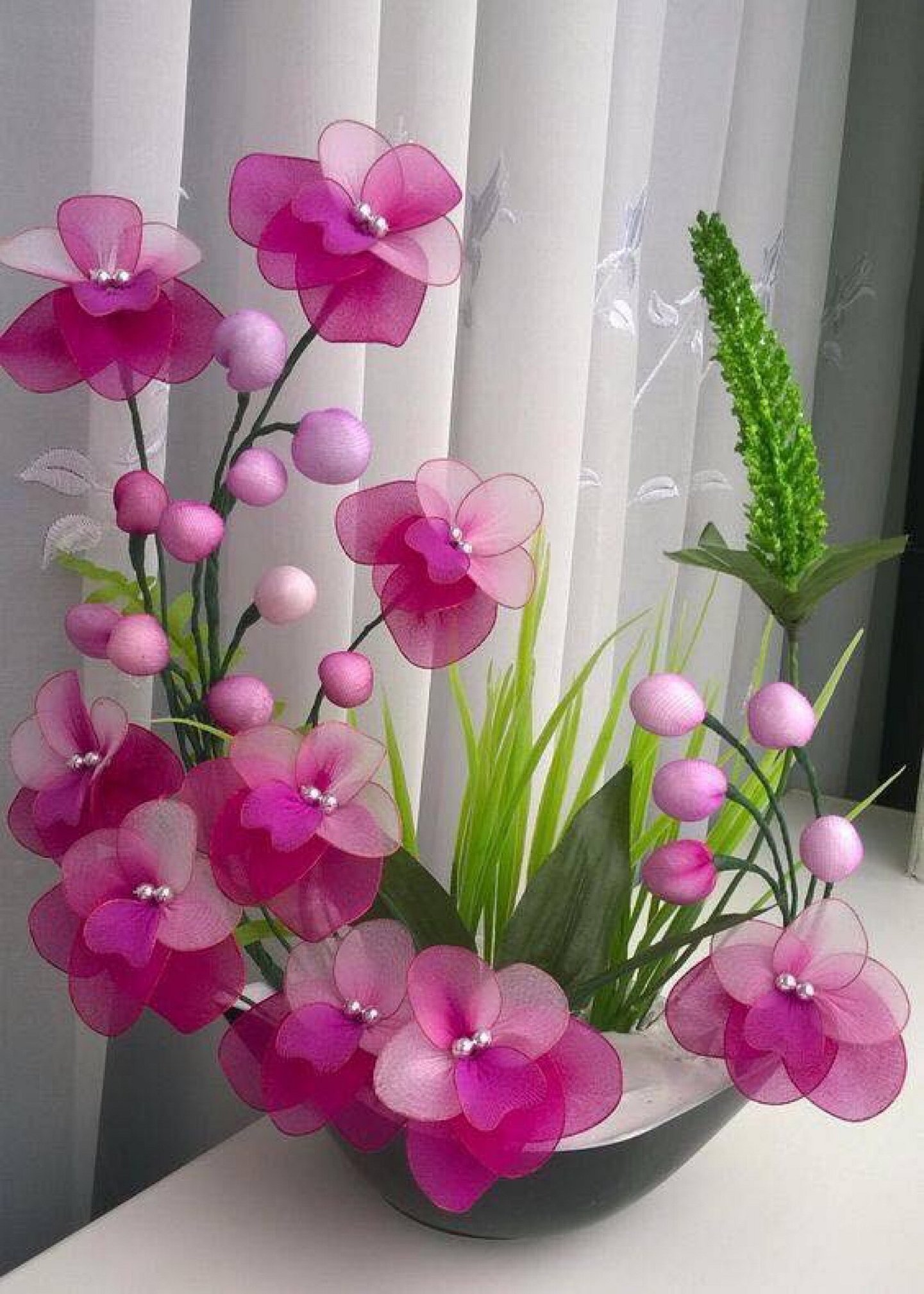
Thanks to the rich variety of goods for handicrafts, few people in modern realities make flowers from nylon tights. This method has several disadvantages: insufficient strength and elasticity of the fabric, a small variety of colors and textures, as well as size: the resulting cuts from tights do not always allow you to finish the composition.
Nylon
The main material for floral decoration is nylon fabric. This material is created in textile factories specifically for this type of handicraft. When producing it, the tension of nylon on the frame and the bending of products are taken into account, so nylon fabric is strong and durable, but at the same time it is thin and transparent. Nylon is produced in several versions (monochrome, multi-colored, openwork, with glitter, etc.).
As a rule, nylon flowers are created from standard-sized textile fabrics, but when creating large floral decorations, giant nylon can be used.
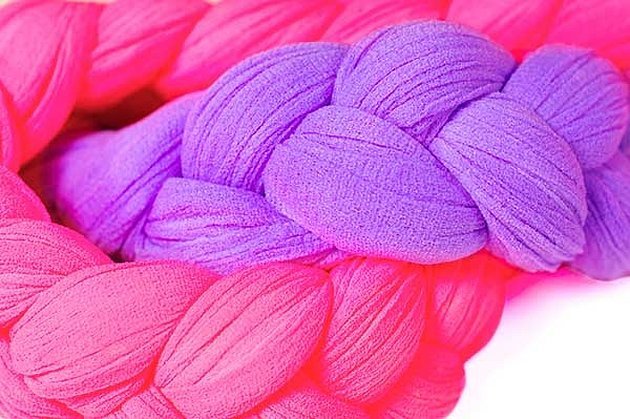
Please note! Special nylon for creativity stretches well. This allows to avoid deformation of petals when it is stretched on the frame.
Wire
The base of the product is a special flexible wire. Thanks to it, the structure is stable and durable, and at the same time, the frame of the product is flexible enough - this allows you to give the desired shape to the entire composition.
The type of wire needed for flowers and stems made of nylon - its thickness, rigidity and texture - depends on what it will be used for. When creating petals, flexible and thin wire is used, and for stems - rigid and thick. A variety of wire surfaces (fluffy, with paper braiding or lint-free) will allow you to achieve the desired effect without much difficulty.
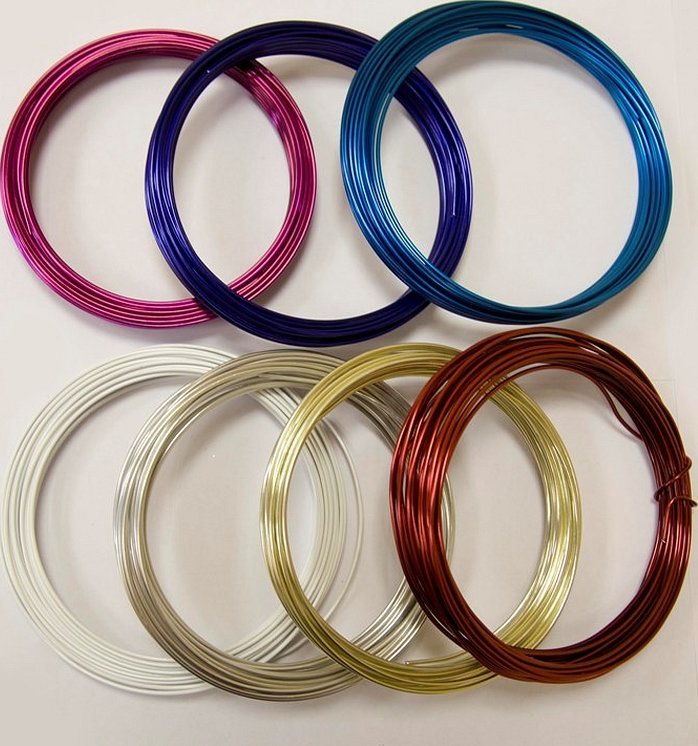
Special devices and tools
To work, you need to prepare tools that will help make the creative process easier and more enjoyable:
- Scissors. Sharp manicure scissors are ideal for working with nylon.
- Pliers or wire cutters. Necessary for cutting and bending wire.
- Nylon threads. They are used to secure the nylon to the frame of the product and also to connect the parts of the composition together.
- Template. Special sets of plastic cylinders or improvised materials of cylindrical shape (bottles, batteries, tubes, etc.) are suitable for the base.
- Floristic tape. It is used for decorating wire, fastening and decorating visible joints and other minor defects. The elastic and durable tape has an adhesive surface, which allows you to refuse the use of glue when wrapping.
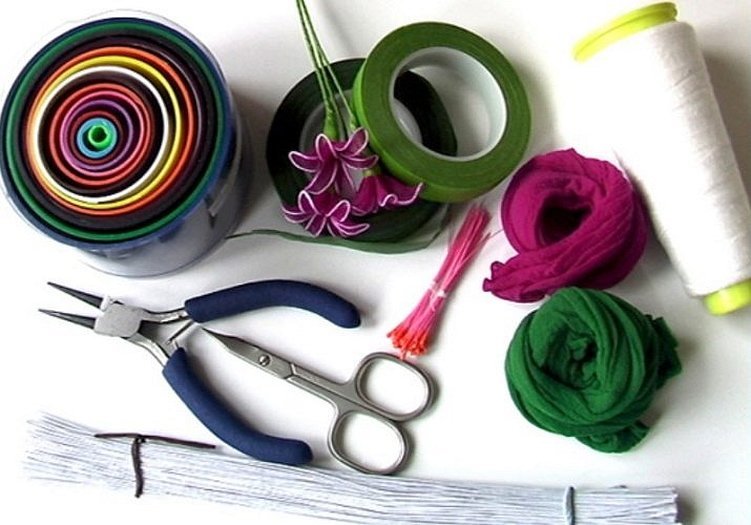
How to make the basic elements
Flowers from nylon for beginners - master class on making the main elements with your own hands:
Petals
To make the flower petals, you need to wrap a thin wire around a template of the appropriate size. Connect the wire tendrils and screw them with pliers. Then remove the resulting "ring" from the base and cut off the excess wire with nippers. To give the petal the desired shape, pull out the resulting frame with your hands. Do the same with the rest of the petals. The next step is to stretch the nylon onto the resulting frames. "Insert" the petals into the fabric, stretching it. Twist slightly at the base and wrap with nylon thread. Cut off excess fabric and wire.
Stems
The stems made of thick and stiff wire are wrapped with green tape. When wrapping, it is necessary to step back a little from the flower and start wrapping the stem from the bottom up in several layers, and then wind the tape in one layer down to the very end of the wire.

Centers, pistils, stamens and sepals
They are made in different ways depending on the flower, as they are all different from each other. A simple solution is to buy ready-made parts. Making miniature elements yourself is a long, labor-intensive and painstaking process, and the final result will not always be natural and flawless.
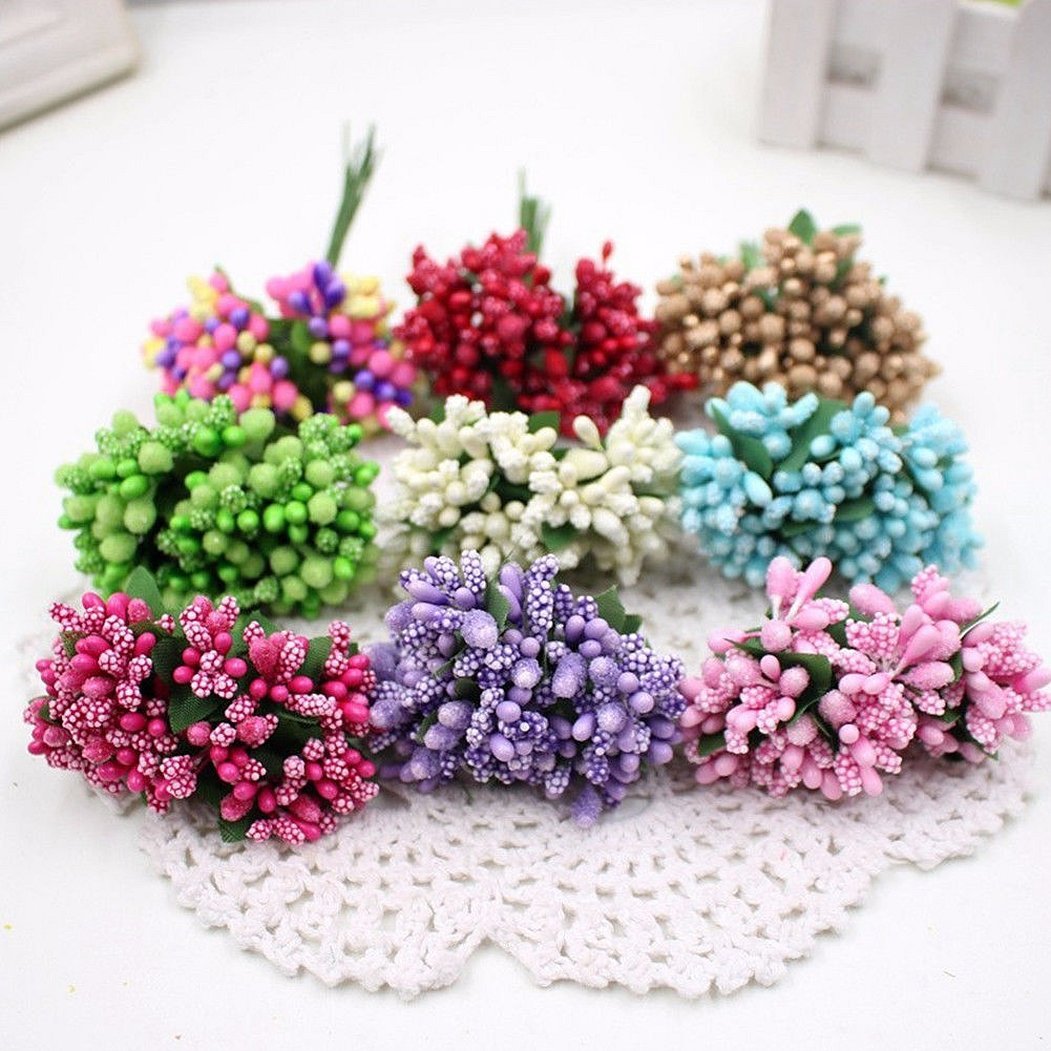
How to make miniature flowers from nylon
Small nylon inflorescences will look great not only in a vase - airy lily of the valley or primrose flowers can be used to decorate hairpins, headbands or brooches.
For example, to create a hydrangea, you need to make 22 flowers for each inflorescence, each of which consists of 4 miniature petals (there are 88 of them in one inflorescence).
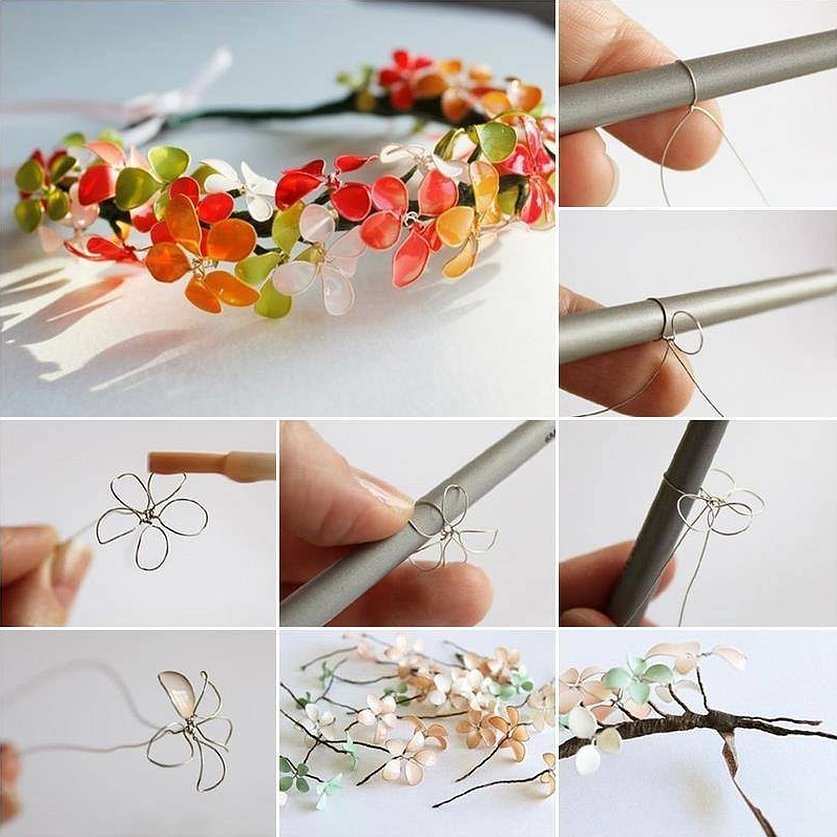
Hydrangea flowers made of nylon and wire
Materials:
- nylon of white, pink or blue, as well as green color;
- ready pistils;
- wire to match the flowers;
- green wire;
- floral tape;
- floral wire;
- nylon threads.
Step-by-step instructions for beginners on how to make flowers from nylon with your own hands:
1. Take a thin wire, give it a round shape by winding it onto a small cylinder, for example, a small battery, a ballpoint pen or any other even smaller cylinder.
2. Stretch nylon over the resulting molds and secure with thread.
3. Fasten the floral wire to the pestle using thread.
4. Attach four petals to the resulting center and wrap with floral tape.
5. From the 22 finished flowers, form an inflorescence in the form of a large ball. The diagram shows how to arrange the rows to get a round inflorescence: in the first row, you need to mark one flower, in the second - six, in the third - nine, and in the fourth - six flowers.
6. To make the leaves wavy, wind the green wire onto the rod of a ballpoint pen. Then straighten it out and use a template to give it a rounded shape. Then use your hands to form a leaf.
7. Cover the resulting shapes with nylon and secure with threads.
8. Attach to floral wire and wrap with floral tape.
9. Attach the finished leaves to the hydrangea stem, masking the joints with tape.

Purple lily made of nylon
A beautiful interior decoration is a purple lily.
To make it you will need:
- purple or lilac nylon;
- wire in tone;
- green wire for leaves and stems;
- floral wire;
- nylon threads;
- templates of appropriate size;
- pistil and stamens;
- floral tape.

1. Cut two pieces of wire 17.5 cm long. Twist them together 4 times, connect the two free edges, forming a petal. Wind the remaining long ends of the wire onto the rod of a ballpoint pen so that the petals are wavy. Then wrap them around the template, connect them to the first two ends of the wire. Bend the resulting shapes with your hands and cover with lilac nylon, tie with thread. Fasten the petals, securing the stamens and pistil in the middle of the flower. In total, you will need five petals for one lily.
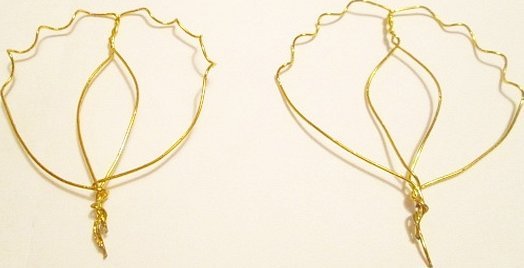
2. Bend the green wire in half. Twist one part together, and bend the free ends to form a leaf and connect them to the twisted ones. You will need at least two leaves for each lily. Cover the blanks with green nylon, tie them up and fasten them to the stem. Wrap the lily with floral tape, hiding any visible imperfections.
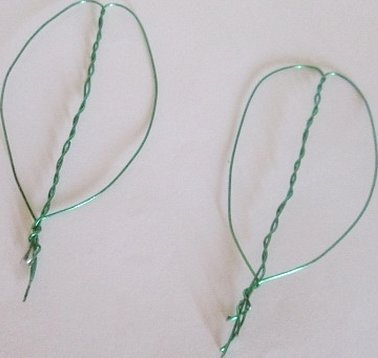
Beautiful flower of water lily or water lily
To create a water lily you will need:
- white or pink nylon;
- wire;
- green nylon for leaves;
- thick yellow threads;
- floral tape.
Master class on making a water lily:
1. Pass a bunch of thick yellow threads through a hook bent at one end of the wire. Tie with nylon thread, trim the ends and form a fluffy water lily core. For the composition as in the photo, you will need two such cores.
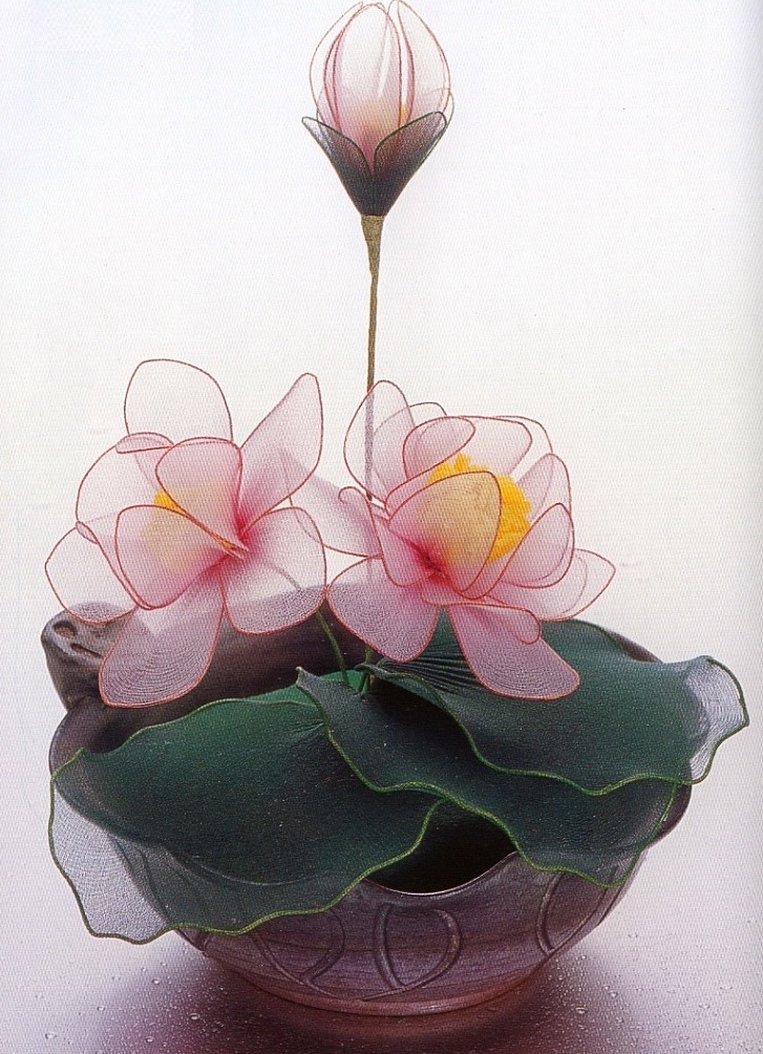
2. The petals of the largest water lily are made according to a standard pattern. Each petal is 4 centimeters wide. After stretching the nylon on the wire, give the blanks an oblong and pointed shape. Bend the petals from the central row upwards, as shown in the photo. In the first water lily, arrange three rows of petals: both outer ones of six pieces, and the central ones of five.
3. A medium-sized water lily consists of two rows, each with five petals of the same size.
4. The flower bud consists of 4 petals, 3 centimeters wide. The blanks themselves are pulled out by hand, giving them an elongated narrow shape.
5. The water lily leaves are large and wide, you will need five of them. Wind a 18-centimeter-long wire onto a ballpoint pen so that the edges of the leaves are wavy. Give them a rounded shape and cover them with green nylon, wrap the base with thread.
6. Attach the resulting blanks to the floral wire, wrap with green tape and form a finished composition.
Making poppy seeds
In order to “grow” field poppy from nylon, you will need the following materials:
- red nylon fabric;
- wire for petals, stems and leaves;
- florentine;
- ready stamens and centers;
1. Make five petals according to the standard pattern, using your hands to give them a curved shape. Fasten with a thread with an artificial center and stamens, wind the finished flower to the wire.
2. Place several small leaves along the stem and cover with floral tape.
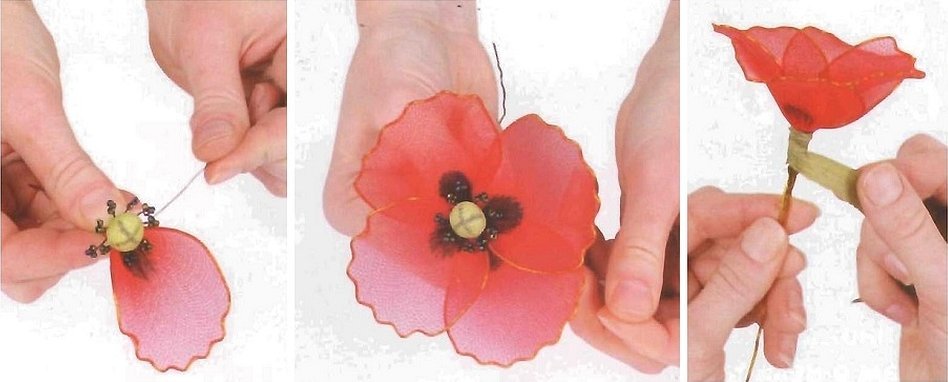
Bouquet of nylon flowers
How to make a flower arrangement from multi-colored nylon: to do this, you need to make a bouquet of different types of flowers. By gradually collecting each of them separately, for example, peonies or orchids, you can create a large floor composition from nylon fabric. Place the finished bouquet in a flower basket or planter.
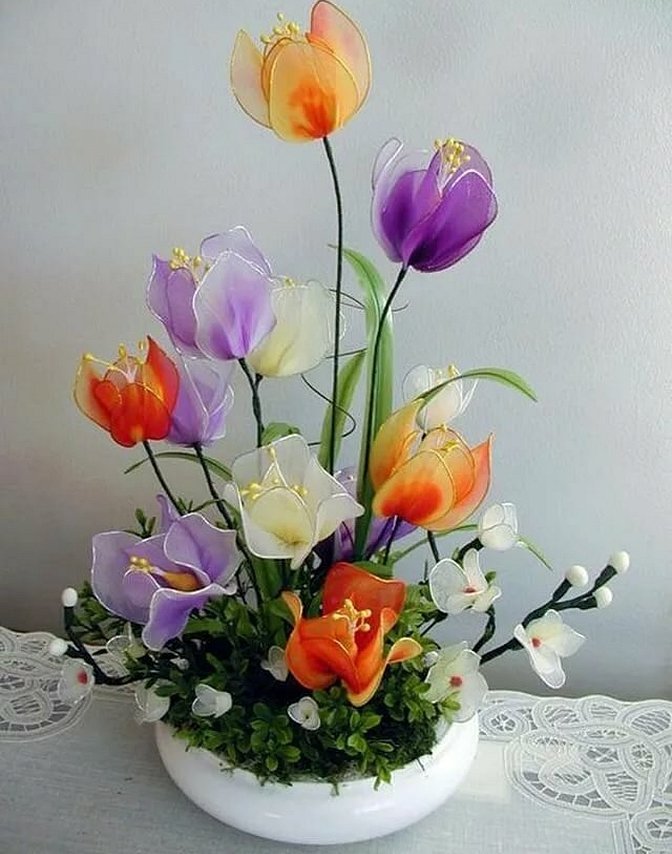
Creating incredibly beautiful flowers and compositions from floral nylon is a hobby that can develop into an interesting and profitable hobby with minimal investment.




